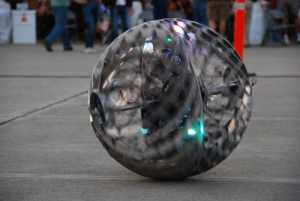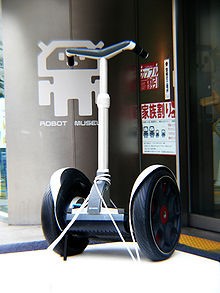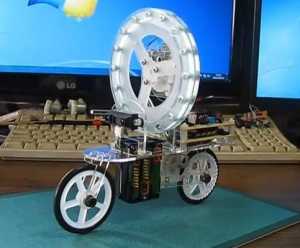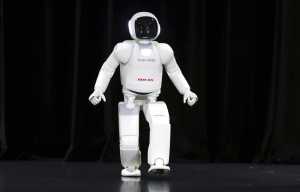Robotics is a disruptive technology in a nutshell. Scientists and engineers have worked a lot on Robotics, but there is a lot more to witness about the Robotics Technology. India, taking into consideration, has started innovating robots using different applications.
Robotics is an extension of technology dealing with the design, construction, operation and application of robots, as well as computer systems for their control, sensory feedback, and information processing. Robotics Technologies cater to the automated machines, which can take place of the humans in dangerous environments or manufacturing processes, or resemble humans in appearance, behavior and cognition.
When celebrating the foundation of Advances in Robotics and Automation, we are also thinking over how to get rapidly increasing reputation for this new journal. At the same time, we also note a mushroom growth of open access journals in different scientific fields. ARA must have some unique features to distinguish itself from others.
Robotics and the World of Artificial Intelligence
Artificial Intelligence (AI) is a general term that implies the use of a computer to model and replicate intelligent behavior. Research in AI focuses on the development and analysis of algorithms that learn and perform intelligent behavior with minimal human intervention.
These techniques have been and continue to be applied to a broad range of problems that arise in robotics, e-commerce, medical diagnosis, gaming, mathematics, and military planning and logistics, to name a few. Several research groups fall under the general umbrella of AI in the department, but are disciplines in their own right, including, robotics, natural language processing (NLP), computer vision, computational biology, and e-commerce.
Specifically, research is being conducted in estimation theory, mobility mechanisms, multi-agent negotiation, natural language interfaces, machine learning, active computer vision, probabilistic language models for use in spoken language interfaces, and the modeling and integration of visual, haptic, auditory and motor information. Basically, the AI robots are the artificial agents acting in the real world environment.
Different Applications of Robots
Robotics is a broad field and everyday there is a pioneering invention in the field. Robots were invented by the humans just for fun but by now they are used for assisting humans in various sectors. Human beings are better suitable for multifaceted, imaginative, adaptive jobs, and robots are good for dreary, recurring tasks, permitting human beings to do the harder thinking jobs, whereas a robot is employed for substituting humans for various recurring tasks or entertainment to make living more expedient.
Currently, robots perform a number of different jobs in numerous fields and the amount of tasks delegated to robots is rising progressively. The best way to split robots into types is a partition by their application.
- Industrial robots– These robots bring into play in an industrialized manufacturing atmosphere. Typically these are articulated arms particularly created for applications like- material handling, painting, welding and others. If we evaluate merely by application then this sort of robots can also consist of some automatically guided automobiles and other robots.
- Domestic or household robots– Robots which are used at home. This sort of robots consists of numerous different gears for example- robotic pool cleaners, robotic sweepers, robotic vacuum cleaners, robotic sewer cleaners and other robots that can perform different household tasks. Also, a number of scrutiny and tele-presence robots can also be considered as domestic robots if brought into play in that sort of environment.
- Medical robots– Robots employed in medicine and medicinal institutes. First & foremost surgical treatment robots. Also, a number of robotic directed automobiles and perhaps lifting supporters.
- Service robots– Robots that cannot be classed into any other types by practice. These could be various data collecting robots, robots prepared to exhibit technologies, robots employed for research, etc.
- Military robots– Robots brought into play in military & armed forces. This sort of robots consist of bomb discarding robots, various shipping robots, exploration drones. Often robots at the start produced for military and armed forces purposes can be employed in law enforcement, exploration and salvage and other associated fields.
- Entertainment robots– These types of robots are employed for entertainment. This is an extremely wide-ranging category. It begins with model robots such as robosapien or the running photo frames and concludes with real heavy weights like articulated robot arms employed as movement simulators.
- Space robots– I would like to distinct out robots employed in space as a split apart type. This type of robots would consist of the robots employed on Canadarm that was brought into play in space Shuttles, the International Space Station, together with Mars explorers and other robots employed in space exploration & other activities.
- Hobby and competition robots– Robots that is created by students. Sumo-bots, Line followers, robots prepared merely for learning, fun and robots prepared for contests.
Types of Robotics:
Robotics is an area of interest to human beings for more than one hundred years. On the other hand, our perception over robots is influenced by the media and international film industry (Hollywood). A robot’s distinctiveness transforms depending on the atmosphere it works in. Some of these are as follows:-
- Outer Space– Robotic arms that are under the control of a human being are employed to unload the docking cove of outer-space shuttles to launch satellites or to build a space station.
- The Intelligent Home– Robotic systems can nowadays scrutinize home safety, ecological circumstances and energy consumption. Door & windows can be unlocked mechanically and electrical device such as lights and A/C can be pre-programmed to turn on. This helps residents to enjoy appliances irrespective of their mobility.
- Exploration– Robots can enter the environments that are injurious to human beings. An illustration is observing the atmosphere within a volcano or investigating our deep marine life. NASA has utilized robotic probe for environmental study, ever since the early 60’s.
- Military Robots– Flying robot drones are brought into play for close watch in present time’s modern armed force. In the future robotic airplane and automobiles could be employed to transmit petroleum, bullets, bombs, etc or clear minefields.
- Farms– Programmed robots are used by harvesters to cut and collect crops. Robotic milk farms are existing permitting workers to nourish and milk their cattle distantly.
- The Car Industry– Robotic arms are used, these arms are able to execute numerous tasks in the car manufacturing & assembling procedure. They carry out jobs such as sorting, cutting, welding, lifting, painting and bending. Similar functions but on a minor scale are now being intended for the food industry to execute tasks like- the trimming, cutting and processing of different types of meats like- chicken, beef, fish, lamb, etc.
- Hospitals– The development of a robotic suit is under construction that will allow nurses to raise patients without injuring their backbones. Scientists in Japan have crafted a power facilitated suit which will provide nurses the additional power that they need to lift patients.
- Disaster Areas– Observation robots built-in with superior sensing and imaging gears. This robot can work in dangerous environments like urban site spoiled by earthquakes by inspecting floors, walls, and roofs for structural reality.
- Entertainment– Interactive robots that shows behaviors and education capability. One such robot is owned by SONY which moves around freely, responds to all your commands, carries your luggage and even responds to your oral instructions.
Locomotive Robots
Rolling robots
 For simplicity, most mobile robots have four wheels or a number of continuous tracks. Some researchers have tried to create more complex wheeled robots with only one or two wheels. These can have certain advantages such as greater efficiency and reduced parts, as well as allowing a robot to navigate in confined places that a four-wheeled robot would not be able to.
For simplicity, most mobile robots have four wheels or a number of continuous tracks. Some researchers have tried to create more complex wheeled robots with only one or two wheels. These can have certain advantages such as greater efficiency and reduced parts, as well as allowing a robot to navigate in confined places that a four-wheeled robot would not be able to.
Two-wheeled balancing robots
 Balancing robots generally use a gyroscope to detect how much a robot is falling and then drive the wheels proportionally in the same direction, to counterbalance the fall at hundreds of times per second, based on the dynamics of an inverted pendulum.Many different balancing robots have been designed.While the Segway is not commonly thought of as a robot, it can be thought of as a component of a robot, when used as such Segway refer to them as RMP (Robotic Mobility Platform). An example of this use has been as NASA’s Robonaut that has been mounted on a Segway.
Balancing robots generally use a gyroscope to detect how much a robot is falling and then drive the wheels proportionally in the same direction, to counterbalance the fall at hundreds of times per second, based on the dynamics of an inverted pendulum.Many different balancing robots have been designed.While the Segway is not commonly thought of as a robot, it can be thought of as a component of a robot, when used as such Segway refer to them as RMP (Robotic Mobility Platform). An example of this use has been as NASA’s Robonaut that has been mounted on a Segway.
One-wheeled balancing robots
 A one-wheeled balancing robot is an extension of a two-wheeled balancing robot so that it can move in any 2D direction using a round ball as its only wheel. Several one-wheeled balancing robots have been designed recently, such as Carnegie Mellon University’s “Ballbot” that is the approximate height and width of a person, and Tohoku Gakuin University’s “BallIP”.Because of the long, thin shape and ability to maneuver in tight spaces, they have the potential to function better than other robots in environments with people.
A one-wheeled balancing robot is an extension of a two-wheeled balancing robot so that it can move in any 2D direction using a round ball as its only wheel. Several one-wheeled balancing robots have been designed recently, such as Carnegie Mellon University’s “Ballbot” that is the approximate height and width of a person, and Tohoku Gakuin University’s “BallIP”.Because of the long, thin shape and ability to maneuver in tight spaces, they have the potential to function better than other robots in environments with people.
Spherical orb robots
Several attempts have been made in robots that are completely inside a spherical ball, either by spinning a weight inside the ball, or by rotating the outer shells of the sphere. These have also been referred to as an orb bot or a ball bot.
Six-wheeled robots
Using six wheels instead of four wheels can give better traction or grip in outdoor terrain such as on rocky dirt or grass.
Tracked robots
Tank tracks provide even more traction than a six-wheeled robot. Tracked wheels behave as if they were made of hundreds of wheels, therefore are very common for outdoor and military robots, where the robot must drive on very rough terrain. However, they are difficult to use indoors such as on carpets and smooth floors. Examples include NASA’s Urban Robot “Urbie”.
Walking applied to robots
 Walking is a difficult and dynamic problem to solve. Several robots have been made which can walk reliably on two legs, however, none have yet been made which are as robust as a human. Many other robots have been built that walk on more than two legs, due to these robots being significantly easier to construct. Walking robots can be used for uneven terrains, which would provide better mobility and energy efficiency than other locomotion methods. Hybrids too have been proposed in movies such as I, Robot, where they walk on two legs and switch to four (arms+legs) when going to a sprint. Typically, robots on two legs can walk well on flat floors and can occasionally walk up stairs. None can walk over rocky, uneven terrain.
Walking is a difficult and dynamic problem to solve. Several robots have been made which can walk reliably on two legs, however, none have yet been made which are as robust as a human. Many other robots have been built that walk on more than two legs, due to these robots being significantly easier to construct. Walking robots can be used for uneven terrains, which would provide better mobility and energy efficiency than other locomotion methods. Hybrids too have been proposed in movies such as I, Robot, where they walk on two legs and switch to four (arms+legs) when going to a sprint. Typically, robots on two legs can walk well on flat floors and can occasionally walk up stairs. None can walk over rocky, uneven terrain.
Opportunities, Challenges, and the Future of Robotics in India
Robots are quickly moving out of controlled environments into homes and public spaces. In fact, researchers are also developing artificial intelligence systems that will allow robots to make decisions autonomously.
With the advancement of science and technology in India, robotics is entering the industrial space rapidly. As entrepreneurship opportunities and employment are opening up for tech enthusiasts who desire to enter this growing and exciting field, future of robotics in India seems bright and promising. India, like the rest of the world, has understood that skill, speed, accuracy, and consistency of robots are unmatched by humans.
Opportunities:
Robotic technologies are extensively used across a range of sectors such as atomic energy, space, metals, textiles, automotive, and manufacturing industries. Besides, health sector in India has also initiated the use of robotic technology widely in operation theatres and even in rehabilitation centers to augment the quality of life.
Robotics has proved to be a growing field and many avenues have opened in recent past. Many experts believe that robotics is best suited for industrial automation which includes manufacturing, packaging, and assembling. In fact, robotics and automation have the potential to revolutionize the industrial scenario by promising to bring the same result as computer systems have brought in services and other sectors.
Robotics in automation sector has proved to improve productivity, safety as well as the quality of the end product while allowing the human operators to take up more value-added roles. In fact, the effects of robots replacing jobs in large numbers are already felt. Over a period of three years, the Indian textile giant Raymond replaced nearly 10,000 jobs. In another instance, executives of Grey Orange, a home-grown warehouse robotics company, believe that the ‘Butler’ robots can pick up nearly 600 items an hour as against human worker who can manage to pick up to close to 100 items. Furthermore, the ‘Sorter’ robots manufactured by Grey Orange company can automatically scans and sort packages in the warehouses of e-commerce and logistics giants like Jabong, Flipkart, and DTDC.
Challenges:
There are many challenges that India must overcome before it is considered as a go-to destination for robotics. One of the biggest challenges is cost and procurement of the required hardware and other electronic components to build a robot. Due to the extensive paperwork involved in importing hardware components into the country, not many commercial applications are ready to enter the market.
Additionally, acquiring and retaining quality talent is one of the biggest challenges, as robotics is a multidisciplinary field. Another major challenge is that SME customers expect visible ROI prior to proactively adopting robotics.
Future:
Robotics is mainly capturing industries like manufacturing, pharmaceutical, packaging, FMCG, and inspection. The other promising sectors include education and defense. There is no doubt that robotics technologies are all set to change the way things are done in the industries in which they are being implemented. Experts believe that in the near future it is inevitable that robotics will become an essential aspect of various sectors.
Like other technologies, adoption of robotics technology world is usually slow. However, the rising demand for robotics technology in a wide array of industries indicate that there will be huge opportunities and hence a higher rate of adoption of robotics technology.
At the forefront of India’s manufacturing process would be the companies with advanced and innovative automation technologies. The increasing emphasis on the new initiative, “Make in India”, will shoot up the demand for robotics technology. The need for meeting global manufacturing standards and huge opportunities for foreign players will be definitely witnessed shortly by Indian robotics industry.








